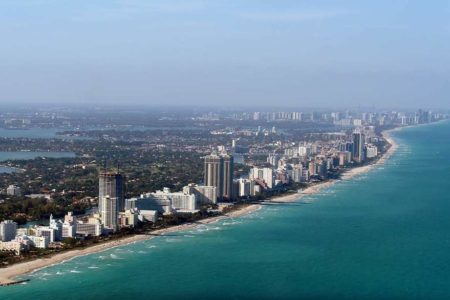 The media portrayal of Denmark as a country hostile and inhumane to migrants is misleading, if not completely false.
The media portrayal of Denmark as a country hostile and inhumane to migrants is misleading, if not completely false.
One reason for the inaccurate picture is that it is painted by journalists’ political bias. Another is that trustworthy official Danish statistics on the country’s immigration problem are both difficult to find and even harder to interpret. A further problem is a lack of reliable research, at best; and purposely distorted data, at worst.
The following breakdown illustrates that rather than being more relatively free of the consequences of mass migration than other European countries in general, and Scandinavian countries in particular, Denmark is in a state of societal collapse. In spite of Copenhagen’s many laws that govern migration and affect immigrants, the Danish people have been experiencing a major cultural and political shift in their life as they have traditionally known it.
Population Projections
In 1960, the population of Denmark was 4,580,708. Today, that number stands at 5,768,712. This growth appears to be largely due to immigration.
In 2016, Statistics Denmark projected that the country will have 507,000 “non-Western” immigrants by the year 2060, and 342,000 “non-Western descendants.”
“Descendants”, however, include only the first generation after the person who migrated. So the official figures do not show the real picture.
In 1989, a private organization, “The Danish Association”, published an alternative projection as part of a special edition of the group’s periodical Danskeren(September 1989, p. 3, not available on the internet.) The article, published anonymously — revealing the degree of political correctness and self-censorship required in Denmark even then — predicted that immigration would remain relatively static, regardless of foreseeable insufficient attempts to tighten legislation. This prediction has turned out to be almost correct up to now.
The article predicted about 1.1 million immigrants around 2020, in accordance with what can be seen in current statistics if you include the third generation of newcomers as well as the probable number of unregistered foreigners.
If the population statistics continue to follow this pattern, ethnic Danes — whose birthrate is far lower than that of non-Western immigrants – will become a minority sometime around the year 2065. This is in fact quite likely to happen, as immigrants defined as “refugees” continue to enter the country; and others, such as arrivals of family members and “walk-ins,” are rarely able to be returned to their countries of origin.
Employment and Social Welfare
According to a 2017 report by Statistics Denmark, only about half of non-Western immigrants between the ages of 16 and 64 are employed (53% of men and 45% of women). When broken down into countries of origin, however, major differences among migrants were revealed — with the employment rate being particularly low among those hailing from Iraq, Lebanon, Somalia and Syria.
Analyzing Statistics Denmark data, the Danish Employers Confederation revealed that in 2016, 41.5% of non-Western immigrants were on welfare, while only 17.5% of ethnic Danes were supported by the same benefits. In 2017, a third of all the people provided for by Denmark’s basic social-welfare system were immigrants, which constitutes a rise of 82% in a mere seven years.
These figures show that the public expenses connected to immigration will, in the long run, bring the welfare state to an end.
Education
According to the same 2017 Statistics Denmark report, 49% of male non-Western descendants, and 70% of female non-Western descendants, completed an education in an employable field, compared to 73% male ethnic Danes and 81% female ethnic Danes.
In addition, ethnic Danish children scored higher on final exams than immigrants’ children and their first-generation descendants (grades of 6.7 for boys and 7.4 for girls, compared to 5.3 respectively 5.9 for non-western first-generation descendants). Those who scored lowest were first-generation descendants of Turkish and Lebanese immigrant parents.
A 2018 report by the Danish Ministry of Education found a similar difference even among third-generation descendants of migrants. The study was disputed, but the factual results stand. They indicate that many of the long-term descendants of non-Western immigrants will have difficulties satisfying the demands of a modern, highly industrialized Western society.
Unfortunately, reports in Denmark increasingly end up as this one did: If officials publish something that contradicts the fairy-tales of the do-gooders, journalists will take action and scare the transgressor — so he will rephrase what he said without directly correcting it.
The Economy
According to a February 2018 Danish Finance Ministry report, the government’s net annual expenditure on non-Western immigrants in 2015 was 36 billion Danish kroner — approximately $5 billion USD. As there are approximately 5 million ethnic Danes, the taxpayer cost borne by each individual, in effect, came to $1,000 per year, or $4,000 for a family of four.
That figure, however, only refers to public budgets directly related to immigrants. It does not include the additional indirect public funds spent on law enforcement, schools, social security administration and other ancillary matters, due to the presence of non-Western immigrants.
It will not be possible in the long run to finance these rapidly growing expenditures.
Crime
According to the Statistics Denmark report, the crime rate among in 2017 was 35% higher among non-Western male immigrants and 145% higher among male descendants of non-Western immigrants than in the Danish male general population. It should be noted that the figures are misleading, since third-generation descendants of immigrants are counted as Danes also in this context. Male descendants of immigrants from Lebanon – many of whom were, according to the report, stateless Palestinians — followed by male descendants of immigrants from Somalia, Iraq, Pakistan, Morocco and Syria — rated the highest for crime.
Polls
Polls have been taken among immigrants. Examples: In 2006 young adult Muslims in Denmark proved to be more religious that their parents; half of them even thought that freedom of speech should give way for consideration of religious rules and traditions (reported in Jyllands-Posten 21/5 2006). Only 59% of the Muslims though that the constitution alone should be the basis for Danish legislation. More than a third of the Muslims in Denmark felt more connected to their country of origin than to Denmark (Jyllands-Posten 13/5 2006). Four out of 10 boys of Turkish and Lebanese background expect their mother to be at home to take care of family and children (Jyllands-Posten 12/11 2008). About half of the Muslims polled thought that Israel has no right to exist. Other polls show the same depressing picture.
Political Fallout
Do not be fooled by the much-publicized burqa ban that went into effect in Denmark in August 2018. For one thing, it has rarely been enforced — only 13 fines in half a year. Moreover, those who wish to oppose the idea of equality between men and women are free to go to countries where such dress-codes are welcomed.
Do not trust other media stories running along the same lines, either. Suffering refugees are not forced to live on a remote island. Only foreign criminals“convicted of crimes and slated for deportation under the terms of their sentences” will be housed there. And they will even be given ferry rides to the mainland, under the excuse that this is necessary due to “international conventions”.
Refugees are not “stripped” of their valuables at the border. Jewelry and assets exceeding a value of 10,000 Danish kroner ($1,500 USD) have to be handed in to the authorities to help pay for those seeking asylum. Just as Danes do not get social welfare money if they have valuables that enable them to provide for themselves. The actions by the border-control authorities on this are subject to control by the courts.
Other examples of media disinformation on Denmark abound.
The political climate in Denmark is such that even Prime Minister Poul Schlüter (served 1982-1993), a conservative, at a time when there was a discussion in 1989 of reversing the then recently-passed catastrophic immigration legislation, was prevented by the private but heavily subsidized organization Danish Refugee Council from meeting with a representative of the most prominent anti-immigration organization. [1]
Most of all, due largely to the left-wing media, most Danes fail to understand how serious the problem is that the country is facing from the influx of non-Westerners, whose children and grandchildren in unsettling numbers do not appear to be adopting Danish culture and values, and who seem to resist assimilation. It is thus highly unlikely that any political party that opposes immigration will find support among voters to influence legislation enough to meet the country’s urgent needs.
[1] Full disclosure: the present author who was by then a Crown servant holding a senior university position; the full story published in his book Opgøret, 2001, ISBN 87-90014-73-5, p. 57 including further documentation.






Thomas Porter
If immigration is such a “good” thing then why aren’t all countries doing it?
Western countries have done WAY more than they should have in this area and in “refugees” and asylum seekers. If it’s going to continue other than Western countries need to step up and do their part.
And those things are *very unfair* to the Taxpayers of Western countries just like “foreign aid” is. “Foreign aid” is nothing but a giant steal-a-thon starting right on K-Street. The Mercedes Benz dealers *Love* foreign aid and there’s a Mercedes Benz dealer in every country in the world!
You don’t need to be in a Western country to be “human” do you?
sam
that’s what the government want to be a Muslim nation.
Longshot
Wait, so socialism and open-borders aren’t the “dream team” after all?
H.M.
The problem is: Everyone who wants to be committed to truth – no matter what – can know these things. But there are great social problems connected to holding and spreading these views. These facts are considered #fakenews and #hatetruth (truth that cannot be true because my gut tells me it is hateful).
You are considered hateful, rightwing, unloving, fascist and nationalistic – both by society and by the church. The mantra is that we should be welcoming and accepting and since in Christ all distinctions are taken away, it does not matter. So it does not matter how many people will come and what will happen to our homelands and people. Such considerations are worldly and pagan for holier-than-thou Christians. If their version of Christianity means that apart from personal acts of charity the gospel also commands us to indirectly harm our home countries, is it any wonder people do not want to be Christians? And what if they are right and we really should not care?